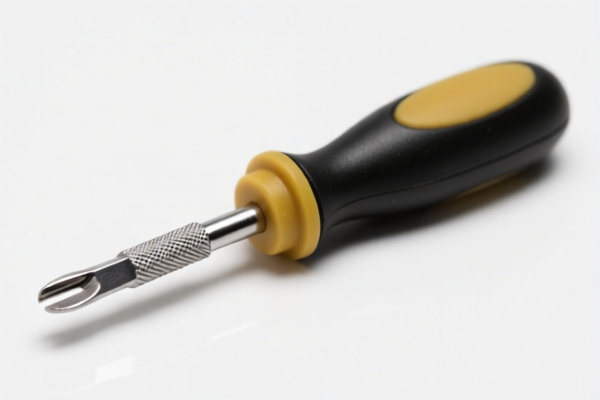| HS Code | Official Doc | Tariff Rate | Origin | Destination | Effective Date |
|---|---|---|---|---|---|
| 9024100000 | Doc | 55.0% | CN | US | 2025-05-12 |
| 9024800000 | Doc | 55.0% | CN | US | 2025-05-12 |
| 9031808060 | Doc | 30.0% | CN | US | 2025-05-12 |
| 9031808070 | Doc | 30.0% | CN | US | 2025-05-12 |
| 3822110000 | Doc | 30.0% | CN | US | 2025-05-12 |
| 3822900000 | Doc | 30.0% | CN | US | 2025-05-12 |




Testing Tools
Testing tools are software applications used to automate or assist in the software testing process. They are employed to verify and validate software functionality, performance, security, and usability. The breadth of testing tools is extensive, catering to diverse testing needs across the software development lifecycle.
Material (Technology & Components)
Most testing tools are built upon programming languages such as Java, Python, C#, and JavaScript. They often integrate with various frameworks and libraries specific to the testing type (e.g., Selenium for web application testing, JUnit for Java unit testing). Common components include:
- Test Scripting Engines: Allow users to write and execute automated test scripts.
- Reporting Dashboards: Visualize test results, providing metrics and insights.
- Integration APIs: Enable connection with CI/CD pipelines, bug tracking systems, and other development tools.
- Object Recognition: Identifies UI elements for automated interaction (especially in GUI testing).
- Virtualization/Emulation: Simulates different environments for testing compatibility.
Purpose
The primary purposes of testing tools are to:
- Improve Software Quality: Identify defects and vulnerabilities before release.
- Increase Efficiency: Automate repetitive testing tasks, saving time and resources.
- Enhance Test Coverage: Execute a wider range of tests than manual testing allows.
- Reduce Costs: Early defect detection is generally less expensive than fixing issues in production.
- Facilitate Continuous Integration/Continuous Delivery (CI/CD): Automate testing as part of the development pipeline.
Function
Testing tools perform a variety of functions, categorized by testing type:
- Unit Testing: Verify individual components or functions of the software.
- Integration Testing: Test the interaction between different software modules.
- System Testing: Evaluate the complete system functionality.
- Acceptance Testing: Determine if the software meets the user's requirements.
- Performance Testing: Assess the software's responsiveness, stability, and scalability.
- Security Testing: Identify vulnerabilities to potential attacks.
- Usability Testing: Evaluate the ease of use and user experience.
- Regression Testing: Ensure that new code changes do not introduce new defects or break existing functionality.
- API Testing: Verify the functionality, reliability, and performance of APIs.
Usage Scenarios
- Agile Development: Automated tests are integrated into sprints for continuous feedback.
- Web Application Testing: Tools automate browser interactions, form submissions, and data validation.
- Mobile Application Testing: Tools simulate different mobile devices and operating systems.
- Continuous Integration/Continuous Delivery (CI/CD): Tests are executed automatically whenever code changes are committed.
- Load Testing: Tools simulate a large number of concurrent users to assess performance under stress.
- Security Audits: Tools scan for vulnerabilities and compliance issues.
Common Types
- Selenium: A popular open-source framework for automating web browser interactions.
- JUnit: A unit testing framework for Java.
- TestNG: A testing framework for Java, inspired by JUnit but with more features.
- pytest: A popular Python testing framework.
- Appium: An open-source framework for automating mobile application testing.
- JMeter: A popular open-source tool for load testing and performance testing.
- Postman: A popular tool for API testing.
- SoapUI: A tool for API testing, specifically for SOAP web services.
- Burp Suite: A tool for web application security testing.
- Jenkins: An open-source automation server often used for CI/CD, including automated testing.
- Cucumber: A tool that supports Behavior Driven Development (BDD).
- LoadRunner: A commercial tool for load testing and performance testing.
- Katalon Studio: A low-code test automation platform.
Based on the provided information, “testing tools” can encompass a range of products with varying classifications. Here’s a breakdown of potentially relevant HS codes:
- 9024100000: This code covers machines and appliances for testing the hardness, strength, compressibility, elasticity, or other mechanical properties of materials (for example, metals, wood, textiles, paper, plastics), and parts and accessories thereof, specifically machines and appliances for testing metals. Chapter 90 relates to measuring, checking, precision, medical or dental instruments and apparatus. Heading 2410 specifically focuses on testing machines for mechanical properties. The 0000 indicates a general classification within this category.
- 9024800000: This code also covers machines and appliances for testing the hardness, strength, compressibility, elasticity, or other mechanical properties of materials (for example, metals, wood, textiles, paper, plastics), and parts and accessories thereof, but for other machines and appliances not specifically for testing metals. Chapter 90 and Heading 2480 apply as above, covering a broader range of testing machines.
- 9031808060: This code covers measuring or checking instruments, appliances and machines, not specified or included elsewhere, specifically other equipment for testing the characteristics of internal combustion engines, for testing electrical characteristics. Chapter 90 covers measuring instruments, and Heading 3180 focuses on other instruments. The 8060 further specifies equipment for internal combustion engine testing, with a focus on electrical characteristics.
- 9031808070: This code covers measuring or checking instruments, appliances and machines, not specified or included elsewhere, specifically other equipment for testing the characteristics of internal combustion engines, but other than those testing electrical characteristics. Chapter 90 and Heading 3180 apply as above, covering other instruments for internal combustion engine testing.
According to the provided reference material, the HS code options related to 'testing tools' are limited, with only the following 4 found.
It is important to note that the applicable tariff for each of these codes is: a base tariff of 0.0%, an additional tariff of 25.0%, and a tariff of 30.0% after April 2, 2025, resulting in a total tariff of 55.0% for 9024100000 and 9024800000, and 30.0% for 9031808060 and 9031808070.
Customer Reviews
No reviews yet.